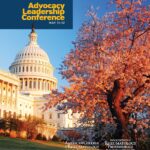- Tanaz A. Kermani, MD, from the University of California, Los Angeles;
- Sharon Chung, MD, from the University of California, San Francisco;
- Alexandra Villa-Forte, MD, MPH, from the Cleveland Clinic;
- Anisha B. Dua, MD, MPH, from Northwestern University, Chicago; or
- Rebecca Manno, MD, MHS, from Johns Hopkins, Baltimore.
This list is not exhaustive; these are just some of the many women who may not come to mind, but should.
Such efforts may not go far enough. One criticism of efforts to improve gender distribution in committees, conferences and other public venues is that these efforts are often described in the same way physicians speak about the need to eat right and exercise. The efforts are aspirational, not actual requirements, with concrete expectations and goals.
The remedy may be for conference organizers to create a public policy that the gender balance of conference speakers should reflect the gender balance of the audience. The key word is public. Jennifer L. Martin, PhD, director of the Griffith Institute for Drug Discovery, Queensland, Australia, explains it thus: “It’s no use having a policy if no one knows about it. Make it visible. Put it online for everyone to see. Make a direct link to it on the conference or symposia website and put it on your Facebook page. Provide it to the organizing committee. … Send it to the chairs of the sessions, send it to the invited speakers. Make sure everyone knows right from the start that the conference committee is serious about getting gender balance right. Don’t make gender balance an afterthought.”11
Dr. Martin suggests we take the extra step of committing to reporting the data: After each conference, calculate the proportion of female speakers, compare it with the composition of the audience, and see how well the speakers reflect those being spoken to.
I know it feels uncomfortable to use anything but the speaker’s expertise when selecting someone to speak. That said, this is important, because who we allow to stand at the podium affects the next generation. In her article in Wired, science writer Sarah Scoles noted the problem “reaches past the physical conferences and their chronology—to the postdoc watching the livestream on lunch break, to the student who searches YouTube five years from now. … Instead of inspiration, they can find a demonstration of just how steep the uphill battle is.”12
The goal isn’t—I hope!—to prevent men from speaking publicly ever again. We just want to bulldoze some of those hills. As Dr. Michos said, it’s just a question of paying attention.


